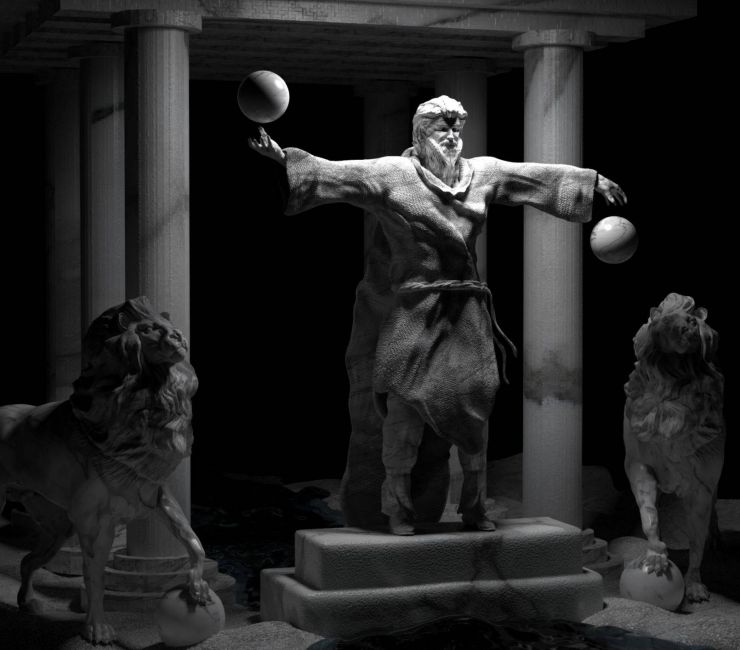In Pictures
Stories through the world of images
Photo credit: Norayr Kasper, "I Will Talk to You About Time." Fotoistanbul 2015.Join our community and receive regular updates!
Join now!
New


From Earth to space: Fabulous firsts brought to light at the Museum of Printing in Armenia
What type of images come to mind when you think of a printing museum in Armenia? Bibles and antique books? Printing machines and clichés? A collection of pioneering newspapers from every corner of the Armenian world? It’s probably not some specially processed moonlight-tinted parchment highlighting the Armenian alphabet for a mighty voyage from Earth to space; something more analogous to “louys tesav” (լոյս տեսա՝ւ) or seeing the light of day—pun intended!
At h-pem we celebrate the International Day of Light (May 16th) and the International Museum Day (May 18th) by going back to the first dawn of Armenian printing that ushered in the great epoch of Armenian enlightenment and national awakening.

On this day - Jun. 17, 1971: Armenia's favorite poet, the voice of a nation, Paruyr Sevak died
Fifty years ago today, Paruyr Sevak, one of the greatest Armenian poets of the twentieth century, died in a mysterious car crash. News of his death sent shock waves across the nation, from his village home to the far corners of the Armenian Diaspora.

Ghazanchetsots in peril: Shushi’s ‘white bride’ revisited
On May 8, 1992, the liberation of Shushi was celebrated with “Hayr mer” («Հայր մեր» | “The Lord’s Prayer”) at the church altar of Ghazanchetsots.
Bombed during the 2020 Artsakh War, vandalized, and recently dismantled under the pretext of “renovation,” Ghazanchetsots has now become a bleeding wound too painful to look at.
Check out the facts you might not know about the monument's glorious and tumultuous history below.

Easter in retrospect: The 7 stories you missed in Armenian illuminated manuscripts
Has it not occurred to you that the Last Supper conjures up one specific Da Vinci image in Western culture? That a medieval Armenian counterpart may look quirky in an endearing way? Here we have put together a selection of Armenian miniature depictions of The Passion of the Christ. You may be surprised to find out how their fate has been intertwined with the glorious and tragic fortunes of our nation!

The Nativity: 8 hidden facts in the magic of medieval Armenian art
The birth of Jesus has been a recurring theme for Armenian artists since early times. Depictions of the nativity in medieval Armenian art, especially in miniature painting, are full of religious symbolism. Based on the nativity narratives in the Gospels of Matthew and Luke, they combine traditional approaches to iconography with diverse artistic mediums and common cultural elements.

On this day - Jul.22, 1886: The founding editor of Marmnamarz Shavarsh Krissian was born
A rite of passage for many diasporan children includes attending a game or two at the Pan-Armenian Games or participating in Homenetmen - ՀՄԸՄ Armenian General Athletics and Scouting Union (or, for those really lucky kids—both!). Did you know that both of these organizations owe a debt of gratitude to Shavarsh Krissian?

Armenian mythology: 6 ancient pagan gods we still love today
As a kid, three VHS tapes I’d play over and over—to a point, where I had memorized every single word recorded: Disney’s “Aladdin,” the first “Harry Potter” movie (insert “Sorcerer’s” vs. “Philosopher’s” debate here) and, of course, the funky, gospel-soundtracked “Hercules.”
You remember the lyrics: "Who put the 'glad' in 'gladiator?' HERC-U-LES! Whose daring deeds are great theater? HERC-U-LES!"
All 9-year-old geeks have obsessed over Greek mythology, Ancient Egyptian history, or dinosaurs and fossils at one point. My weakness: the false gods of Mount Olympia! We Armenians aren’t too different from the Greeks, from geopolitical oppression by neighboring empires, to heavy-liquor-and-folk-dance feasts, our histories often click in harmony. And that’s especially the case for our mythologies where our gods aren’t much different (or less extravagant!). Which gods are the most popular in Armenian mythology and what features make them our all-time-favorites? Read on to find out!

Ani, the sacred city of memories: A photo story
Located in the Western Armenian province of Kars (which lies within Turkey’s borders today), the medieval city of Ani, also known as the “City of 1,001 churches” and the “City of forty gates,” lies in ruins. Nonetheless, its remains—including the magnificent frescoes painted inside its old churches—carry the memories of the sacred city’s glorious past and abundant beauty. Strolling around Ani, I could not help but wonder what these ancient stones would tell us. If only they could speak… What memories and stories would they share?
